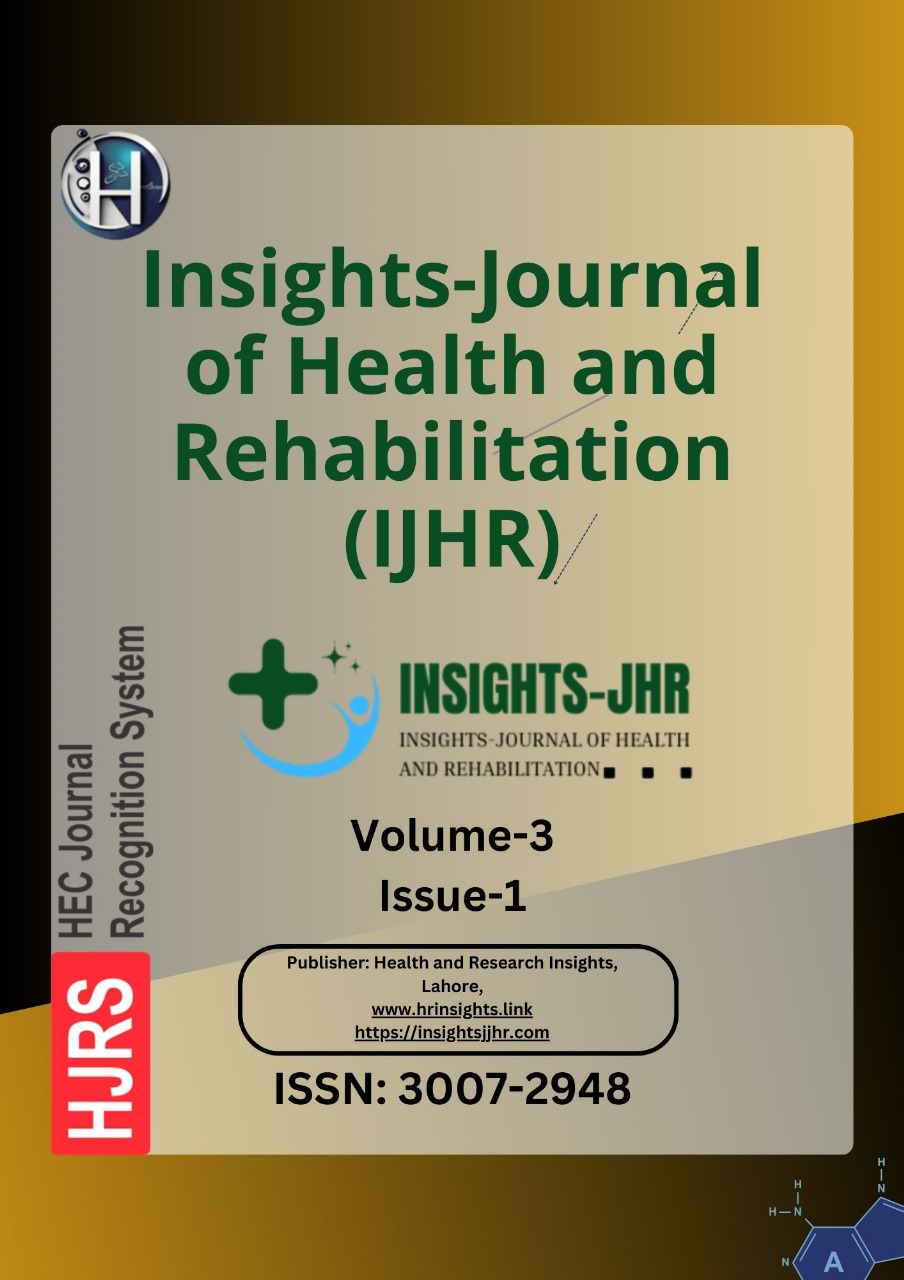COMPARING THE EFFECT OF TOE-IN GAIT MODIFICATION ALONG WITH CONVENTIONAL PHYSIOTHERAPY IN PEOPLE WITH MEDIAL KNEE OSTEOARTHRITIS
DOI:
https://doi.org/10.71000/ep3k1a42Keywords:
Gait modification, Knee osteoarthritis, Numeric Pain Rating Scale, Pain management, Physiotherapy, Rehabilitation, WOMACAbstract
Background: Medial knee osteoarthritis (OA) is a progressive joint disorder characterized by pain, stiffness, and reduced mobility, significantly impacting daily activities and quality of life. Conventional physiotherapy remains a primary non-surgical treatment, focusing on pain relief and functional improvement. However, biomechanical interventions, such as gait modification, have shown potential in redistributing joint loads and alleviating symptoms. Toe-in gait modification has been proposed as an adjunct to standard physiotherapy, potentially enhancing clinical outcomes by reducing medial knee loading and knee adduction moment (KAM).
Objective: This study investigates the additional benefits of integrating toe-in gait modification with conventional physiotherapy in individuals with medial knee OA.
Methods: A randomized controlled trial was conducted at Al Madinah Medical Center and Sukoon Rehab Center, enrolling 34 participants diagnosed with medial knee OA. Participants were randomly assigned to two intervention groups: Group A received conventional physiotherapy, while Group B underwent conventional physiotherapy with toe-in gait modification. The intervention was administered three times per week for eight weeks. Outcomes were assessed using the Numeric Pain Rating Scale (NPRS) and the Western Ontario and McMaster Universities Osteoarthritis Index (WOMAC). Data were analyzed using parametric statistical tests.
Results: At baseline, the mean pain score (NPRS) was 7.30 (SD = 0.984) in Group A and 7.86 (SD = 1.219) in Group B. By the eighth week, pain scores decreased to 4.45 (SD = 1.051) and 4.39 (SD = 1.00), respectively (p < 0.01). Functional outcomes also improved, with WOMAC scores declining from 40.53 (SD = 4.888) in Group A and 43.29 (SD = 5.047) in Group B at baseline to 23.06 (SD = 7.301) and 21.35 (SD = 2.029) by week eight (p < 0.01). Group B exhibited slightly superior improvements in both pain and function.
Conclusion: Toe-in gait modification, when combined with conventional physiotherapy, demonstrated significant improvements in pain reduction and functional enhancement in individuals with medial knee OA. While both interventions were effective, the addition of gait modification provided slightly greater benefits, suggesting its potential as a complementary strategy in OA management. Further research is required to explore long-term effects and optimize individualized rehabilitation approaches.
Downloads
Published
Issue
Section
License
Copyright (c) 2025 Areeba Naseer, Qurba Kiran, Samra Anwar, Aisha Siddiqua, Syed Saqlain Babar, Sidra Jamal, Syeda Sabahat Batool, Muhammad Shazib Butt (Author)

This work is licensed under a Creative Commons Attribution-NonCommercial-NoDerivatives 4.0 International License.







